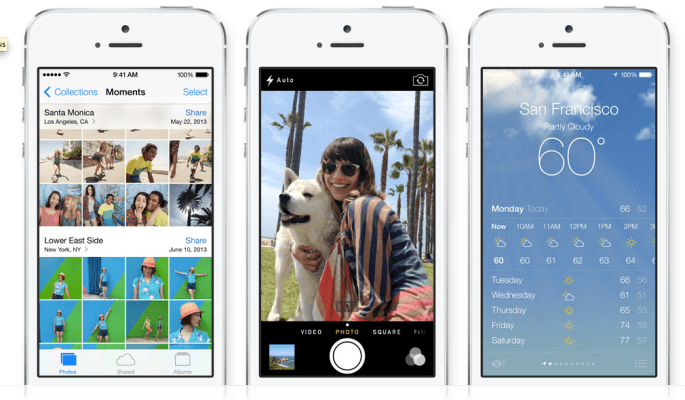It starts innocently. One day you find yourself replacing Apple Maps with Google Maps when it becomes available. Or maybe you fall in love with a new email application. You find, after not really using the default calendar app that there are more robust options out there.
And soon, after a few months, you find that nearly all of the apps that came with your phone have been replaced with similar options from third-party providers: Mailbox, Chrome, and Spotify now sit on your home screen instead of Mail, or Safari, or iTunes. Instead of Notes, you use Evernote. Forecast gives you the weather, and Sunrise tells you where you need to be. When it’s time to take a photo, you open Instagram first.
That might change though, with the introduction of iOS7.
Not for all applications, of course. Heavy Instagram users will continue to be heavy Instagram users, thanks in part to the community aspect of the product. Google Maps will be the app users turn to for getting around, at least until Apple can promise us that its alternative won’t end up getting you lost. And those of you who have become dependent on Evernote are unlikely to move their notes over to the default Apple app, skeuomorphism or no.
But Apple has updated the core functionality of some default apps just enough that they might start winning users over again. In particular, updates to Mail, Safari, Calendar, Weather, Camera, and Photos could make them not just useful, but the application that users turn to first.
That starts with design, and in part with the way that Apple’s apps are made to work seamlessly with the core functionality of the OS. The new Weather app blends seamlessly into the background, while Calendar offers a beautiful new way of managing your day. And the updates to Apple’s Safari web browser looks to make it a fantastic upgrade over the previous version and a formidable alternative to Chrome.
Many of the new features that were added to Apple’s core apps steal borrow heavily from competitors already on the market: It’s no surprise that the addition of gestures in Apple’s Mail app, which Mailbox revolutionized, might be a reason for you to switch over. Introducing Instagram-like filters into its default camera app is one way to keep users engaged if they don’t plan on sharing those pictures with with friends. Adding group photo-sharing features in its Photos app could keep users from adopting apps like Cluster, which are designed to simplify the process of grouping together certain moments based on time and location, and allowing friends to contribute to them. Oh yeah, and with iTunes Radio, you just might think about canceling your Pandora or Spotify subscription.
Of course, it all depends on how well these new apps actually work, and if end up being as cool and as useful as advertised during the demo. Let’s not forget that Apple Maps was introduced to rave reviews during the WWDC keynote last year — and then people actually tried to use it.
It’s quite possible that the new design of these apps will just be window dressing, and those third-party apps will continue to be better than the default options. It’s also possible that, even if Apple’s own applications take a big step forward, they can be leapfrogged over the course of the next year, between now and WWDC 2014. For now, though, it looks like Apple has learned from what its third-party competitors app partners are doing, and the result looks pretty sweet.

